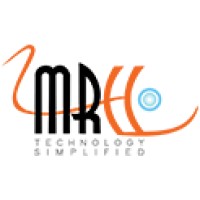K-12 Assessment: Tools For Better Student Outcomes
In today's fast-paced, technology-driven world, education systems are evolving to meet the diverse needs of students. K-12 assessment solutions play a crucial role in this transformation, enabling educators to evaluate student performance more effectively and efficiently. With the advent of digital assessment services and online assessment solutions, schools are now better equipped to monitor progress, identify learning gaps, and tailor instruction to individual student needs. This article explores how these innovative tools and techniques are improving student performance and contributing to the overall success of K-12 education.
The Role Of K-12 Assessment Solutions In Modern Education
K-12 assessment solutions are designed to provide educators with the tools they need to measure student learning outcomes accurately. These solutions include a wide range of services, such as digital assessment solutions, online assessment services, assessment development services, and educational assessment services. By leveraging these tools, educators can develop and implement assessments that are aligned with educational standards, ensuring that students receive a high-quality education that meets national and state requirements.
The Impact Of Digital And Online Assessment Solutions
One of the most significant advancements in K-12 education is the shift toward digital assessment services and online assessment solutions. These technologies have revolutionized the way assessments are administered and analyzed, making the process more efficient and accessible. For instance, digital assessment solutions allow for real-time data collection and analysis, enabling educators to track student progress instantly. This immediacy helps teachers make informed decisions about instruction and intervention, ultimately leading to improved student outcomes.
Moreover, online assessment services provide a flexible and scalable platform for administering assessments, making it easier for schools to accommodate a large number of students. These platforms often include interactive features that engage students and make the assessment process more enjoyable. As a result, students are more likely to perform well, as they are more motivated and less anxious during assessments.
Assessment Development Services: Crafting Effective Assessments
The quality of an assessment significantly impacts its effectiveness in measuring student performance. This is where assessment development services come into play. These services help educators create high-quality assessments that are both reliable and valid. Whether it's summative assessment creation or formative assessment creation, these services ensure that the assessments accurately reflect the curriculum and learning objectives.
Standards-aligned assessment creation is another critical aspect of assessment development services. By aligning assessments with educational standards, educators can ensure that students are being evaluated on the knowledge and skills they are expected to acquire. This alignment is crucial for maintaining the integrity of the education system and ensuring that students are prepared for future academic and career challenges.
Enhancing Learning with Interactive Assessments
Interactive assessments are becoming increasingly popular in K-12 education due to their ability to engage students and provide immediate feedback. Interactive assessment development services offer a range of tools and techniques for creating assessments that are not only informative but also engaging for students. These assessments often include multimedia elements, such as videos, animations, and interactive questions, which make the learning experience more dynamic and enjoyable.
Interactive assessments in education also promote active learning, where students are encouraged to participate and interact with the content. This type of assessment helps students develop critical thinking and problem-solving skills, as they are required to apply their knowledge in various contexts. As a result, students are more likely to retain the information and perform better in future assessments.
Leveraging Technology To Transform Assessment In Education
The integration of advanced technologies, such as Augmented Reality (AR) and Virtual Reality (VR), into K-12 assessment is opening up new possibilities for enhancing student learning. Transforming STEM learning with AR and VR technologies allows educators to create immersive and interactive learning environments that go beyond traditional assessments. These technologies enable students to explore complex concepts in a hands-on, experiential way, which can lead to a deeper understanding and better retention of the material.
Similarly, the way AI revolutionizes higher education with predictive analytics is another example of how technology is transforming the education landscape. In the context of K-12 education, AI can be used to analyze assessment data and predict student performance. This predictive capability allows educators to identify at-risk students early and provide targeted interventions to help them succeed. By using AI-driven insights, schools can improve student outcomes and ensure that all students have the opportunity to reach their full potential.
The Benefits Of Summative And Formative K-12 Assessment Creation
Summative assessment creation and formative assessment creation are the two critical components of an effective assessment strategy. Summative assessments are typically administered at the end of a learning unit or course to evaluate student learning against specific benchmarks. These assessments provide valuable insights into student performance and help educators determine whether students have mastered the content.
On the other hand, formative assessments are ongoing assessments that occur throughout the learning process. They are used to monitor student progress and provide immediate feedback, allowing teachers to adjust instruction as needed. Formative assessment creation is particularly important because it enables educators to identify learning gaps and address them before they become significant issues.
Both summative and formative assessments play a crucial role in improving student performance. By using a combination of these assessments, educators can gain a comprehensive understanding of student learning and make informed decisions about instruction and intervention.
Conclusion
In conclusion, K-12 assessments are essential tools for improving student performance in today's dynamic educational landscape. By leveraging digital assessment services, online assessment solutions, and assessment development services, educators can create high-quality assessments that are aligned with educational standards and tailored to individual student needs. The integration of interactive elements, advanced technologies, and AI-driven insights further enhances the effectiveness of these assessments, leading to better student outcomes. As education continues to evolve, K-12 assessment solutions will play an increasingly important role in ensuring that all students have the opportunity to succeed.









